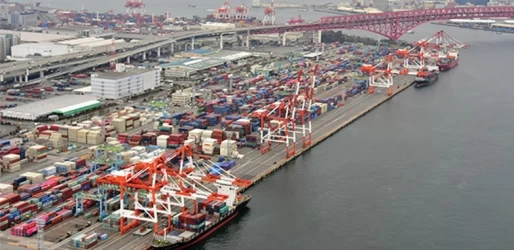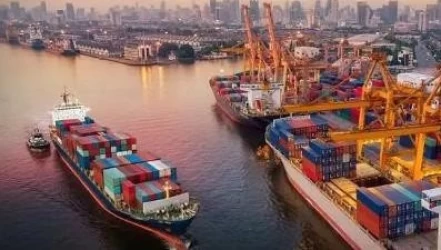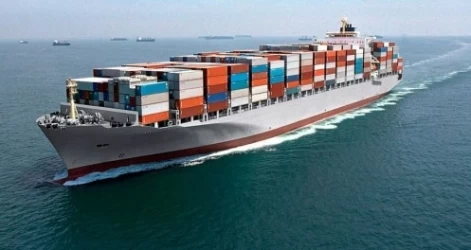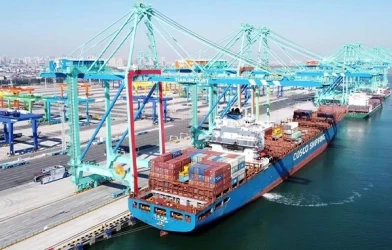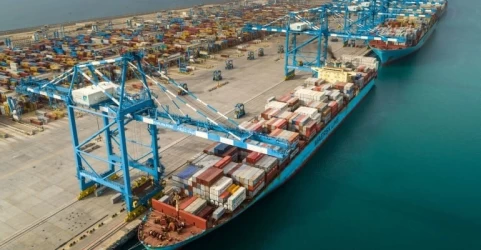Sea freight in the port of Bremen
The Port of Bremen is one of Germany's oldest and most important seaports, playing a critical role in global trade and maritime logistics. Located in the northwestern part of the country, Bremen is part of a dual port system with Bremerhaven, collectively known as the Bremen/Bremerhaven port complex. This strategic location along the Weser River connects it to the North Sea, making it a vital hub for shipping, trade, and international logistics. In this article, we will explore the key aspects of maritime transportation at the Port of Bremen, focusing on its infrastructure, services, and significance in the global supply chain.
Strategic Importance of the Port of Bremen
The Port of Bremen has a long history dating back to the Middle Ages, and over time, it has developed into a modern, highly efficient maritime transport center. Its strategic location provides excellent access to European markets and beyond, with connectivity to major international trade routes. The port handles a wide variety of goods, including bulk cargo, containers, vehicles, and project cargo, catering to industries such as automotive, machinery, textiles, and food processing.
Infrastructure and Facilities
One of the key strengths of the Port of Bremen is its advanced infrastructure. The port is equipped with state-of-the-art terminals, including specialized facilities for handling containers, vehicles, and bulk goods. The container terminal at Bremerhaven is one of the largest in Europe, capable of handling millions of TEUs (twenty-foot equivalent units) annually. Additionally, the port's logistics infrastructure includes efficient warehousing, distribution centers, and intermodal transport options, connecting maritime transport seamlessly with rail and road networks.
The port is divided into several specialized areas, including terminals for automotive logistics, breakbulk, and refrigerated goods. This segmentation allows for efficient handling of various cargo types and ensures that goods are processed and transported with speed and accuracy.
Role in International Trade
Bremen is one of Germany's major gateways for international trade, particularly for goods moving between Europe and the rest of the world. The port serves as a critical link for import and export activities, with strong connections to the Americas, Asia, Africa, and other European nations. It is especially known for its containerized trade, with shipping lines offering services to a wide range of destinations.
Furthermore, Bremen's port is a key hub for Germany’s thriving automotive industry. Major car manufacturers use the port to export vehicles worldwide, taking advantage of the specialized car terminals that ensure efficient loading and unloading.
Environmental Sustainability
The Port of Bremen is committed to sustainable and environmentally friendly operations. The port authority has implemented several initiatives aimed at reducing emissions and promoting green logistics. This includes investments in alternative energy sources, such as wind power and solar energy, as well as efforts to improve the energy efficiency of port operations.
One notable project is the shore power system, which allows ships to plug into the local electricity grid while docked, reducing the need for fuel-powered generators. This not only cuts emissions but also improves air quality in the surrounding areas.
Logistics and Intermodal Transport
The efficiency of the Port of Bremen is further enhanced by its integrated logistics and intermodal transport systems. The port is connected to a dense network of railways, motorways, and inland waterways, allowing goods to be transported seamlessly across Europe. Rail services, in particular, play a crucial role in moving goods between the port and the hinterland, offering a sustainable and efficient alternative to road transport.
In addition to rail and road connectivity, the port has strong links to inland shipping routes via the Weser River. This intermodal system ensures that goods can move from ship to final destination with minimal delays, improving overall supply chain efficiency.
Challenges and Future Development
Like all major ports, the Port of Bremen faces challenges such as congestion, environmental regulations, and the need to continuously upgrade infrastructure. To address these issues, the port authority has initiated several development projects aimed at expanding capacity and improving operational efficiency. These projects include deepening the Weser River to accommodate larger ships, expanding terminal facilities, and adopting new technologies to enhance the digitalization of port operations.
Bremen’s future as a leading maritime transport hub is closely tied to its ability to innovate and adapt to changing global trade patterns. The port is investing in smart technologies, such as automation and blockchain, to streamline customs processes and improve transparency in the supply chain.
Conclusion
The Port of Bremen is a critical player in global maritime transportation, offering world-class infrastructure, strategic connectivity, and a commitment to sustainability. Its role as a key trade gateway for Germany and Europe makes it a vital component of the global supply chain, serving industries across a wide spectrum of goods. With continued investment in technology and infrastructure, Bremen is well-positioned to maintain its status as one of the leading ports in Europe for years to come.
If you have any specific questions or need further assistance, feel free to ask!







